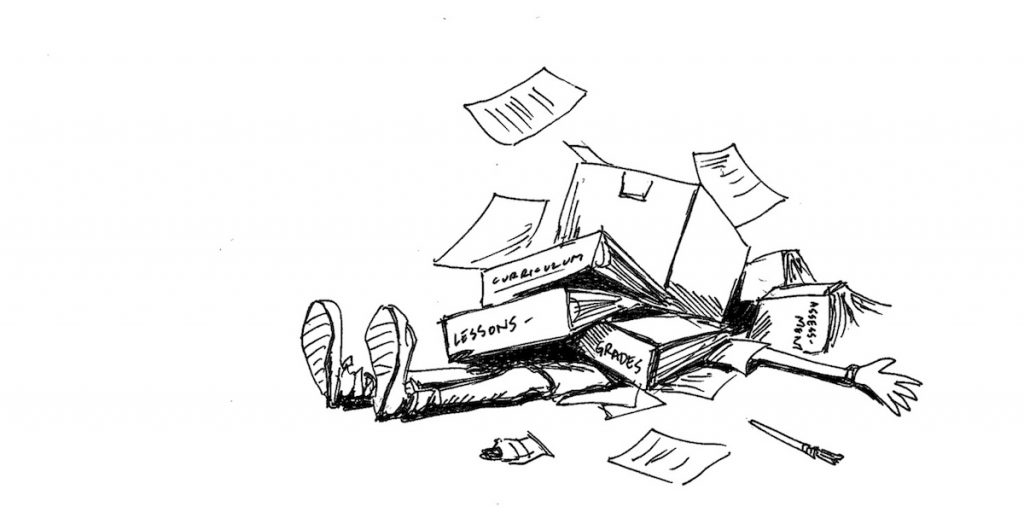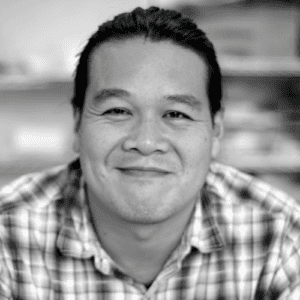Art teachers often experience significant autonomy and anonymity in their school, working away in whatever space has been designated as the “art room.” That is, of course, until someone needs a bulletin board to brighten up a school visit or a set for the school play.
It is natural to want to help in these situations, but it’s also important to consider self-care and not to overextend ourselves.
How can a teacher strike a balance between maintaining a prominent profile in the school community while also keeping themselves and their classes from being co-opted by other demands?
The Request
You’re cleaning up your room after a long day of teaching and the principal pops into your classroom with a quick ask: “Open House is next week, and we really need to brighten up the hallways. You’re the art teacher, can you whip something up? Thanks!”
These requests are common for art teachers in their day-to-day. Sometimes it’s the bulletin board, other times it’s a flyer for an event. On occasion, it’s a bigger ask, like supporting the latest school production by designing and painting the set. There’s an expectation that you, as the art teacher, are just chomping at the bit to tackle this new project to support the school. While many of us may love to help out, the assumption that this is part of our job is the real problem.

As educators, we are asked to serve on committees, maintain our professional development, support our students outside the classroom, and to do all this (and more!) with a smile on our faces. Being looked to as the expert and provider for visual and aesthetic components of a project seems to be an expectation of our jobs.
But there is typically no support or additional compensation offered for these requests. And, as the many small asks add up, we can easily become overloaded to the point of exhaustion. At the same time, doing this extra work can feel like the only way to get recognition for the arts programs in our school, helping to stave off budget cuts.
But there is typically no support or additional compensation being offered for these requests. And as the many small asks add up, we can easily become overloaded to the point of exhaustion.
How do we decide which requests to accept? How do we push back without creating conflict?
The Response
There are many different ways to approach the request. You’ll need to gauge what works for you. This list summarizes some of the methods I have used in crafting a response. They involve a combination of being prepared, identifying priorities, and creating clear expectations.
1. Be prepared for the requests!
As students are completing projects, I document and track their work. I have student portfolios and folders they keep their artwork in, as well as a folder of past unclaimed or donated student works. When I’m asked to put work up or to have something to share, I’ve got a project ready for all occasions. It’s much easier than trying to run around and look for work when a request comes in. Additionally, I try to stay ahead of the requests by keeping student work up in exhibition spaces around the school. This way, I get to showcase the work I want, rather than someone else’s idea of what the art program should look like.

2. Who is making the request?
It’s nice to imagine that we can fulfill all of our colleagues’ needs, but if we’re honest, certain requests get moved to the front of the queue. When your principal makes an ask, that’s usually a non-negotiable. Someone from the district office, or a board member? Also a priority. Another teacher at the school? That’s where other factors come into play; the timeliness of the ask, the potential impact on your workload, and the feasibility of the project should be considered. It can be a delicate balance, but worth thinking through carefully.
3. Set clear expectations.
Letting others know you need the appropriate time and resources to complete requests is important. If requests can be set far in advance and clearly laid out, maybe a project for your cooperating teacher does trump the principal, because your colleague has weighed your needs and time appropriately. Also, letting people know in advance about what you can and can’t do, that certain times of year are a challenge, and what you’ll need to complete requests will make your life much easier. Leading into my final point…
4. Be transparent and be willing to say no.
In reality, no one expects you to stay at school until midnight to finish a project. They don’t expect you to miss out on dinner with your family because you were painting the set. So don’t make it seem like it’s no big deal to get a project done if it is! Be open and honest about when things are too much for you to take on. If you’re clear about what you can do at the start, you’ll avoid awkward exchanges about not getting things done later or complaining about the number of sacrifices you made to get things done. And you minimize the chances of resentment building up!
Maintaining a Balance

This sounds easier said than done, right?
It’s definitely hard to find and keep this balance, and as much as you might prepare for all possible scenarios, you still can end up stressed out by last minute requests that fall outside of your job description. But, if you’re going to put in the effort, it is important for you to know that your school values your work.
People need to know bulletin boards and backdrops don’t happen by magic; hours and dollars are put into this work. If the school does not know, make sure it’s clear to the people in charge, as well as your colleagues, that your time and energy are valuable and essential. If you aren’t able to advocate for yourself and your time, you will likely end up overly stressed because others might be unknowingly taking advantage of you.
Work-Life balance is an important value that goes unnoticed in most fields. Our society has created a culture that values people who put in 80-100 hour work weeks and get the job done, at any cost. This type of attitude leads to burn-out and frustration at all levels. But when you are able to establish balance, you approach your job with a clearer mind and are more productive. Establish boundaries around your time and work. Stake out your space; it is important and will allow you to continue doing your best work as a teacher!
How do you make the value of your work clear to your school?
How do you determine which extra requests to take on and which to turn down?
Magazine articles and podcasts are opinions of professional education contributors and do not necessarily represent the position of the Art of Education University (AOEU) or its academic offerings. Contributors use terms in the way they are most often talked about in the scope of their educational experiences.




